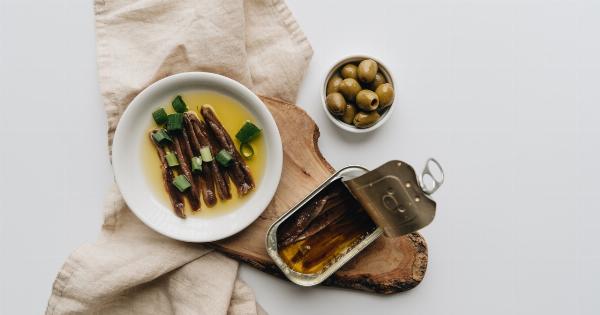Olives are a popular ingredient used in various cuisines around the world. They are known for their rich flavors and versatility. However, not all olive varieties are safe for consumption. Some olives can be toxic if not properly prepared or processed.
In this article, we will discuss dangerous olive varieties and how to identify them.
1. Cerignola Olives
Cerignola olives are large, meaty olives that originated from Italy. While they are delicious when properly cured, they can be dangerous if consumed raw or improperly prepared.
Cerignola olives contain high levels of bitterness and are not meant to be eaten straight from the tree. They should undergo a curing process to remove the bitter compounds and enhance their flavor. Always ensure that Cerignola olives are properly cured before including them in your recipes.
2. Kalamata Olives
Kalamata olives, named after the Greek city of Kalamata, are a popular variety of olive used in Mediterranean cuisine. Although they are loved for their unique flavor and texture, raw Kalamata olives contain a compound known as oleuropein.
Oleuropein is responsible for the bitter taste of raw olives and can cause an upset stomach if consumed in large quantities. Ensure that Kalamata olives are properly processed or cured before consuming them.
3. Castelvetrano Olives
Castelvetrano olives are bright green olives that originated from Sicily, Italy. While they are known for their buttery texture and mild flavor, Castelvetrano olives can be dangerous if they have not been properly processed.
Improperly processed Castelvetrano olives can contain high amounts of the compound called hydroxytyrosol, which can cause digestive issues and discomfort. Always check the packaging or source of Castelvetrano olives and ensure they have undergone proper processing.
4. Arbequina Olives
Arbequina olives are small, Spanish olives that are often used for olive oil production. While they are not toxic in their raw form, some Arbequina olives can be unsafe for consumption due to improper curing.
Insufficient curing can lead to a high level of bitterness and an unpleasant taste. It is recommended to purchase Arbequina olives from reputable sources and ensure they have been properly cured for a safe culinary experience.
5. Niçoise Olives
Niçoise olives, also known as Cailletier olives, are a popular variety used in French cuisine, particularly in the traditional Salade Niçoise. These olives have a rich, fruity flavor that pairs well with various dishes.
However, raw Niçoise olives can contain a high level of oleuropein, which makes them extremely bitter and potentially harmful if consumed in large quantities. Proper processing or curing is essential to reduce the bitterness and make them safe for consumption.
6. Manzanilla Olives
Manzanilla olives are a type of Spanish olive commonly used as a cocktail garnish or stuffed with various fillings. While they are generally safe for consumption, it is important to be cautious when consuming unpitted Manzanilla olives.
Accidentally consuming a pit can pose a choking hazard. Always check if the olives are pitted before serving or consuming them.
7. Picholine Olives
Picholine olives are a popular variety from France, with a moderate size and a distinct elongated shape. These olives are often used in cooking, pickling, or as table olives.
However, raw Picholine olives can have a bitter taste due to the presence of oleuropein. This compound can cause gastrointestinal discomfort if consumed in excessive amounts. Picholine olives should be properly cured or processed before consumption to reduce the bitterness.
8. Halkidiki Olives
Halkidiki olives, also known as Halkidiki green olives, are large Greek olives with a firm texture. They are typically harvested when green and unripe, making them perfect for curing or pickling.
While they are generally safe for consumption, improper curing can result in a high level of bitterness. Always ensure that Halkidiki olives have undergone proper curing before adding them to your recipes or enjoying them as a snack.
9. Ligurian Olives
Ligurian olives, native to the Liguria region of Italy, are small-sized olives with a dark purple color. They are commonly used to produce high-quality extra virgin olive oil.
While Ligurian olives are safe to consume, it is essential to check the quality and storage conditions of the olives you purchase. Poor storage or contamination can make Ligurian olives unsafe for consumption. Always choose olives from reputable sources to ensure their safety and quality.
10. Picholine du Gard Olives
Picholine du Gard olives are a popular green olive variety from France. They have a unique elongated shape and a pleasantly mild flavor. When eaten raw, these olives can have a slightly bitter taste due to the presence of oleuropein.
To reduce bitterness and enhance their flavor, Picholine du Gard olives should undergo a proper curing process. Always ensure that the olives you purchase have been processed and cured to enjoy them safely.
Conclusion
While olives can be a delicious addition to your meals, it is important to be aware of dangerous olive varieties and how to identify them. Always pay attention to the proper processing and curing of olives before consuming them.
By ensuring the safety of the olives you use, you can enjoy their flavors and textures without any risks to your health.































